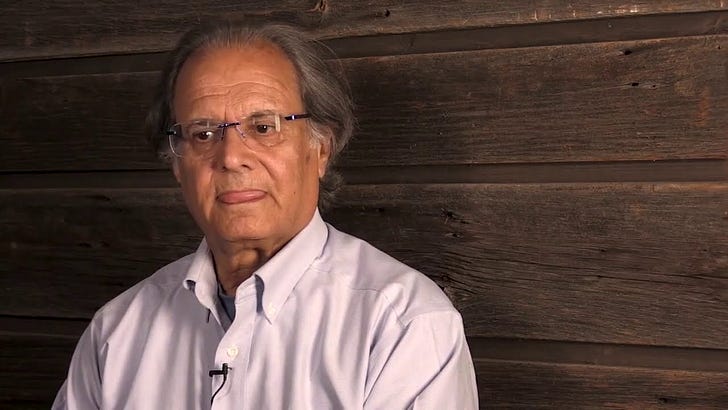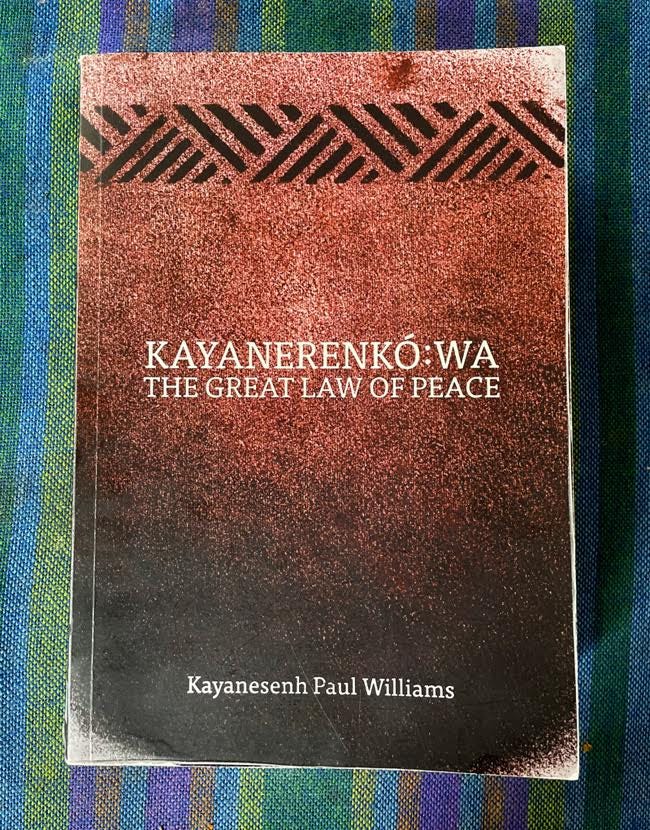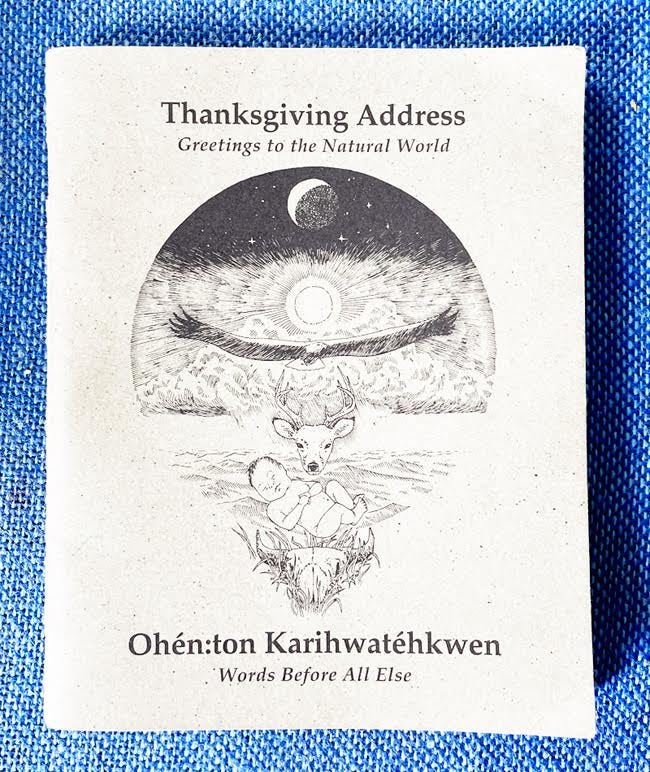Interview with Kayanesenh Paul Williams (Three years ago) Peskotomuhkati at Skutik
I have been very fortunate to be able to take some courses with Haudenoshanee teachers who presented some fundamental Indigenous ideas to Waldorf teachers at the Summer Festival of the Rudolf Steiner College Canada in Thornhill, Ontario. (One course took place in 2018, the other happened last year - 2022.) The leaders of these courses were Amy Bomberry, Aronhiateni (Sean Thompson), Chandra Maracle and Stacy Hill.
One of the striking things I learned was that meetings, including meetings between Haudenoshaunee people and Canadian government officials, are started with the Thanksgiving Address. That is how we started each morning of each week-long course. That is also how the children in the Everlasting Tree School, a Kanyen’keha (Mohawk) Immersion school on the Six Nations Reserve, (near Brantford, Ontario) start each day.
I was able to buy a little booklet of the Thanksgiving Address in Kanyen’keha and English “for the children of the world”, finely illustrated with black and white drawings. When a speaker is chosen to speak the Thanksgiving Address at a gathering, the speaker chooses their own words, “for we are all unique and have our own style”, but the general form is traditional and a certain order is followed. It is noteworthy that the first greeting goes out to “each other as People”. Then the words of thanksgiving turn to “our Mother, the Earth,” then the waters, the fish, the plants, the food plants, the medicine herbs, the animals, the trees, the birds, the four winds, the thunderers, the sun, Grandmother Moon, the stars, the Enlightened Teachers and finally the Creator. After each greeting, the people align their minds in giving greetings and thanks with the phrase: “Now our minds are one”. The closing words mention: “It was not our intention to leave anything out….we leave it to each individual to send such greetings and thanks in their own way. And now our minds are one.”
At these courses, I also learned that the story of Hiawatha includes a mysterious being called the Peacemaker. It takes days to tell this very rich narrative.
Intrigued, I asked for reading suggestions. That is when I learned about Kayanesenh Paul Williams’ book on Haudenosaunee Law:
KAYANERENKÓ:WA
THE GREAT LAW OF PEACE
In this beautiful and significant work, Kayanesenh Paul Williams points out:
The enduring legal systems of the world are the result of people bringing their minds together to foster order and peace. For the People of the Longhouse, the Haudenosaunee, giving thanks is the first step towards law and the beginning of any meeting of the people. (p. xi)
Kayanesenh Paul Williams goes on to point out that thanksgiving becomes a lens through which to see the world:
The world is an orderly place: every part of the natural world has been given instructions and responsibilities, and each continues to fulfill those instructions as well as it can.
also,
This gratitude reminds us, too, that we humans are no more important than the other living parts of the world.
Kayanesenh Paul Williams points out that these words of Thanksgiving are not a prayer, nor are they a reference to a hierarchical world. Giving thanks together is the beginning of ‘being of one mind’. The practice of collective expressions of gratitude brings our minds together, ‘bundles them’ and reminds us that ‘being of one good mind is the ideal condition of the people’. (p. xi)
There are many other significant aspects to what the Peacemaker brought to the warfaring tribes. I hope to write about them in later posts. For now, I wanted to let our hearts and minds focus on gratitude, and ponder how the act of expressing gratitude can influence our laws. Connected to gratitude are also the three levels of connection between people, which Kayanesenh Paul Williams point out are fundamental to being able to dialogue with others:
-respect
-trust
-friendship
How does this connect to Threefolding? One of the fundamental ideas in Threefolding is that lawmakers make good laws - laws before which we all are equal. And that, once we have established fair and wise laws, they be upheld.
Clearly, we need to recognize each other’s cultures. And, based on what Kayanesenh Paul Williams says about Haudenosaunee law, respect is the starting point. The Peacemaker introduced creative and transforming interventions to enable respect to develop.
https://uofmpress.ca/books/detail/kayanerenkowa
Copyright 1993 by the Six Nations Indian Museum and The Tracking Project.
Thanksgiving Address Fund
c/o The Tracking Project
P.O.
Box 266
Corrales, New Mexico 87048
USA
phone/fax 505 898 6967




